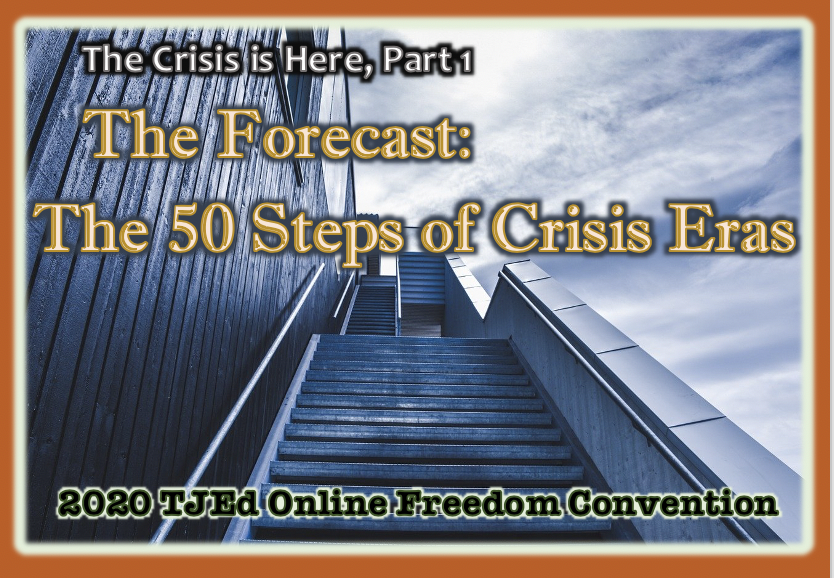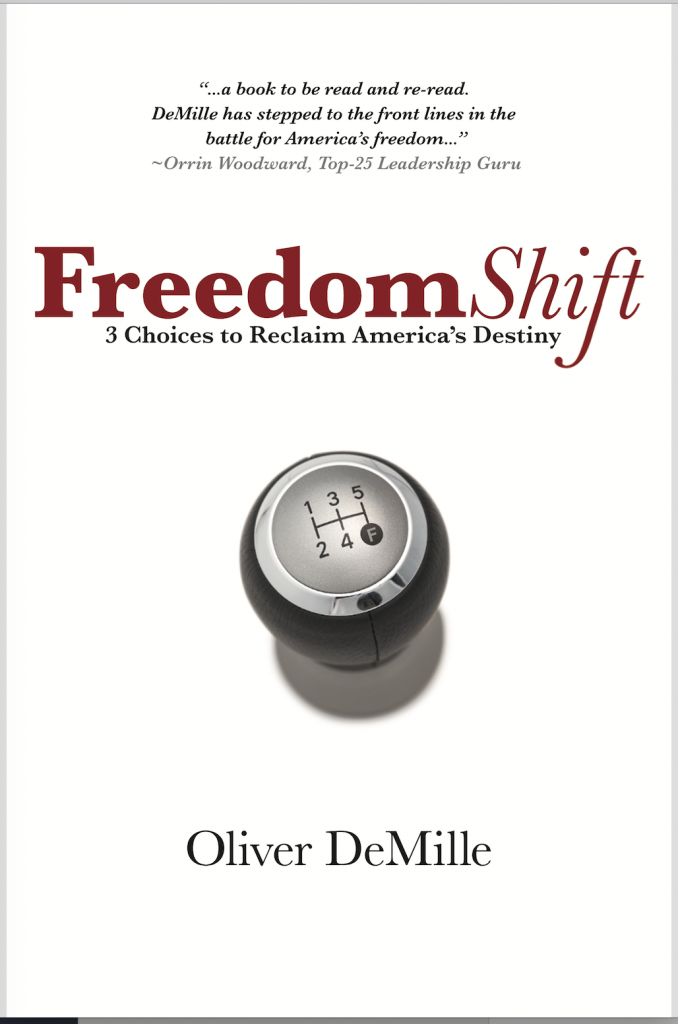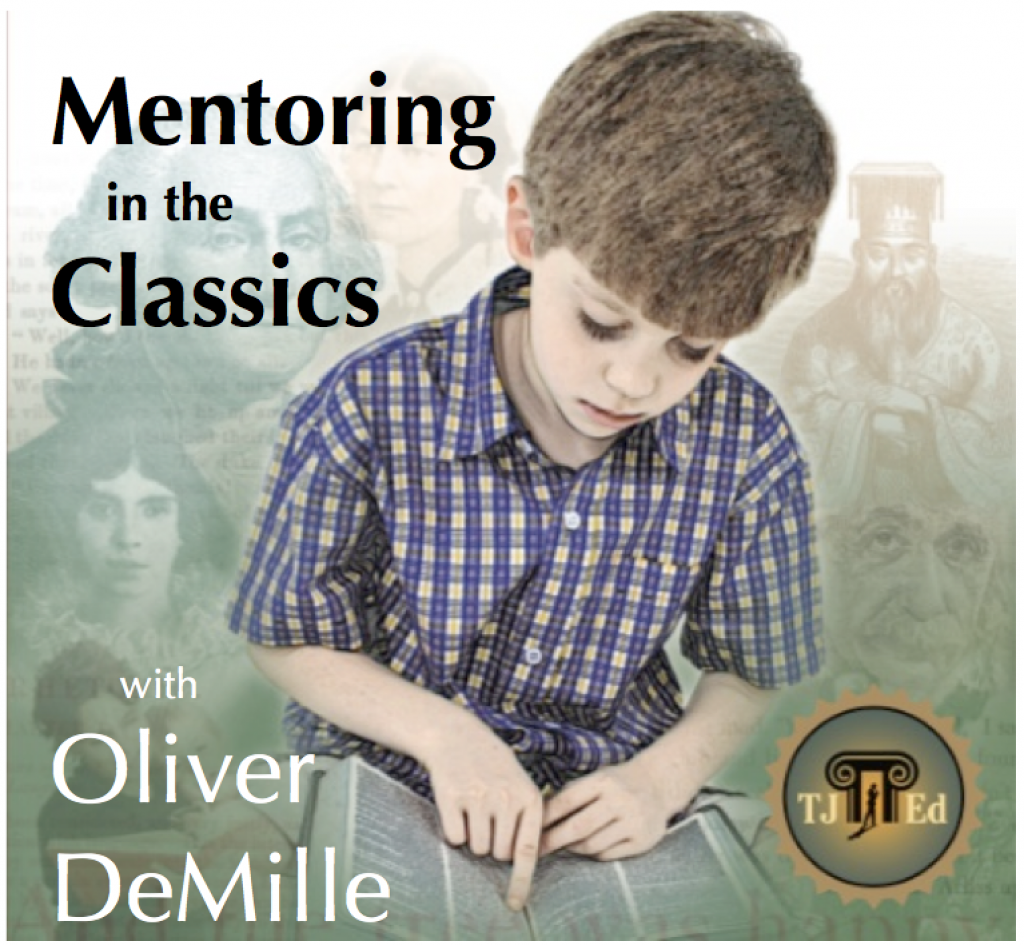What Every Parent (and Citizen and Leader) Should Know Right Now About College
August 1st, 2025 // 9:16 am @ Oliver DeMille
 I’ll be brief. College is changing rapidly, and parents, leaders and anyone who cares about education, freedom and our society needs to know about and understand these changes. Specifically, they need to know about 7 significant changes that are happening right now in the college-university-credential-career system. These are dramatically impacting our nation. Yet for some reason these changes are not effectively making it into the hands of all, or even most, parents, students and others who care about our society.
I’ll be brief. College is changing rapidly, and parents, leaders and anyone who cares about education, freedom and our society needs to know about and understand these changes. Specifically, they need to know about 7 significant changes that are happening right now in the college-university-credential-career system. These are dramatically impacting our nation. Yet for some reason these changes are not effectively making it into the hands of all, or even most, parents, students and others who care about our society.
Let’s change that, right here. The purpose of this post isn’t to promote college, or to discourage it. For some young adults, college is the perfect thing, and others may thrive more in an alternative to college. But without a knowledge of these changes, nobody is fully informed and therefore it can be much more difficult to make the best decisions for each individual student—or for citizens to understand how these changes are impacting our national future.
1. Changing Views on College
 A lot of people, including many higher education experts, are questioning if college is worth the cost anymore. According to Gallup, high confidence in college and universities is down to just 36 percent, after being much higher for the last five decades. (“American’s Confidence in Higher Education Remains at All-Time Low” The Epoch Times, Pan)
A lot of people, including many higher education experts, are questioning if college is worth the cost anymore. According to Gallup, high confidence in college and universities is down to just 36 percent, after being much higher for the last five decades. (“American’s Confidence in Higher Education Remains at All-Time Low” The Epoch Times, Pan)
For those planning on careers in licensed fields such as medicine, law, public-school teaching, etc., college is necessary. For many careers it is not. The key is to research the options and personalize for your
2. Rising Costs and The Six-Year Degree
The price tag of a college education has skyrocketed. The annual cost of tuition has increased more than 179 percent in the last 20 years (“How are college costs adding up these days and how much has tuition risen?” USA Today, Chernikoff; “Buyer Beware: Fees Skyrocket Costs of Higher Education” Forbes, Ladany), and the cost of housing and other living expenses went up almost twice as fast as tuition rose during this time.
The average annual cost of attending an in-state 4-year public college increased from $3,500 per year in 2001 to $9,750 in 2022 (Education Data Initiative, EducationData.org, Hanson). This does not include the higher room and board prices (now averaging $12,917 a year), higher costs for books and supplies (now $1,220 per year), and almost $4,100 per year in additional expenses for students not living at home. (Ibid.)
 In addition to these increases, the average time to graduate with an undergraduate degree is now 6 years, not the traditional 4 years of decades ago. (National Center for Education Statistics) With all these expenses added together, the average total cost for a person to get a public undergraduate degree is estimated at between $168,000 and quite a bit higher.
In addition to these increases, the average time to graduate with an undergraduate degree is now 6 years, not the traditional 4 years of decades ago. (National Center for Education Statistics) With all these expenses added together, the average total cost for a person to get a public undergraduate degree is estimated at between $168,000 and quite a bit higher.
In comparison, though there are differing statistics on this, the approximate total cost for an undergraduate degree twenty years ago was around $58,000. Note that these numbers are for public institutions; most traditional private schools cost a lot more. None of these numbers include the cost of interest on student loans. The numbers of young college graduates filing for bankruptcy recently hit the all-time high. (“Is College Education No Longer Worth It?” The Epoch Times, Ford)
College can be a long-term boost to the finances of graduates; but this is not guaranteed, though many people assume it is. Financial returns over a lifetime based on college degrees depend a great deal on the student’s college major and first job after graduation. Over 52 percent of recent college graduates are underemployed, meaning they work in a job that doesn’t require a college degree. (“Most college graduates face underemployment upon bachelor’s attainment,” The Thomas B. Fordham Institute, Murray) Just over a quarter of graduates in some majors end up working in their field. In the STEMM (Science, Technology, Engineering, Mathematics, and Medicine) majors and other licensed fields this number is typically much higher. The 6 year average time to get an undergraduate degree is a major change from the 4 year model of past decades.
3. The Real Numbers and the Skilled Careers
 Many parents and grandparents are wondering: What is college even like now, compared to when they attended? The old myths about college graduates receiving a million dollars more in lifetime earnings than non-college peers have been debunked, because too many factors weren’t included in that statistic, like the added costs of student loans and interest, the 4-7 fewer years those with degrees spend out of the work force, the extra savings and investing the non-college person makes for 4-7 extra years, the significant differences in lifetime earnings between different academic majors—and between males and females, and other demographic groups—etc.
Many parents and grandparents are wondering: What is college even like now, compared to when they attended? The old myths about college graduates receiving a million dollars more in lifetime earnings than non-college peers have been debunked, because too many factors weren’t included in that statistic, like the added costs of student loans and interest, the 4-7 fewer years those with degrees spend out of the work force, the extra savings and investing the non-college person makes for 4-7 extra years, the significant differences in lifetime earnings between different academic majors—and between males and females, and other demographic groups—etc.
In certain majors, college graduates still make a lot more than non-credentialed workers, but in many majors they don’t. And demographic trends are greatly increasing the demand for many non-college skilled trades and careers (e.g. construction managers, electricians, plumbers, business owners, dental hygienists, various types of therapists, technicians, and high-tech roles, etc.), a number of which are increasingly more lucrative than college degrees in many majors.
For example, consider the “Doctor vs. Plumber Debates” about which career path is wealthier at age 42. There are lots of articles and videos on this. Surprising and interesting. A little folksy at times, but important information.
4. Fewer Students and Cutting Programs
Because of population trends, starting in the fall semester of 2025 and for many years ahead the number of college-age students will be significantly smaller than it has been up to now (“A looming ‘demographic cliff’: Fewer college students and ultimately fewer graduates” NPR, Marcus), meaning major economic downturns in higher education. Decreasing enrollments have led hundreds of campuses to close recently, and this trend is accelerating.
 With the added reality of a lot more college-age students opting for non-college alternatives, even most large prestigious schools are cutting faculty, staff, majors and various programs—or planning to make significant cuts in the years ahead.
With the added reality of a lot more college-age students opting for non-college alternatives, even most large prestigious schools are cutting faculty, staff, majors and various programs—or planning to make significant cuts in the years ahead.
Parents and students must do their research before enrolling to make sure the programs you’re seeking will still be there in 5-7 years when most of this year’s new freshman will graduate and the number of students in college will be significantly decreased.
5. A Lot More Alternatives
There are numerous popular and increasingly accepted alternatives to on-campus college education, including multiple new forms and styles of learning, job and career training.
 For example:
For example:
- gap year projects
- apprenticeships
- internships
- certifications from high-tech online training programs—many of them 1 year to 18 months in duration rather than 4-7 years
- online certificate programs
- bootcamp learning
- community colleges
- tech schools
- online college course options like those offered by Coursera, EdX, Udemy, Khan Academy, Udacity and many others
- great college-level programs that emphasize learning and ignore credits and grades—like non-credit classes from Harvard, Yale, MIT, Standford, Hillsdale, and hundreds of other colleges and universities
- high-quality educational organizations that aren’t colleges or universities such as The Great Courses, MasterClass, TedX, SkillShare, HubSpot Academy
And of course, my favorite: TJEd Depth.
Also, the movement by certain billionaires and other educational leaders to help some of the best and brightest young adults skip college and build a business, partner on an entrepreneurial venture, or join a start-up team. Simultaneously, the alternative credentials (not degrees) sector is growing rapidly, and alternative non-college credentials are now accepted by many big organizations, including IBM, Google, Bank of America, Apple, Amazon, the U.S. Federal Government, a growing number of U.S. state governments, and many more. (“How Alternative Credentials are Shaping Modern Education,” Higher Education Today; “Organizations that Accept Alternative Credentials in Hiring,” Google AI Overview; “The Rise of Alternative Credentials in Hiring,” SHRM.org)
Many experts and organizations now promote new “post-industrial-age” credentialing systems not based on degrees but rather on proven competencies, knowledge, experience and skills. This trend is increasingly known as the “skills first” model.
6. Woke-ism and the Shadow Curriculum
 Left-leaning political activism on most campuses is real and deeply concerning. The number of young adults from homes with traditional family values, pro-faith beliefs, and/or conservative views who are now adopting leftist, anti-family, anti-morality and/or anti-faith perspectives and even aggressively going “woke” during their college years is alarming.
Left-leaning political activism on most campuses is real and deeply concerning. The number of young adults from homes with traditional family values, pro-faith beliefs, and/or conservative views who are now adopting leftist, anti-family, anti-morality and/or anti-faith perspectives and even aggressively going “woke” during their college years is alarming.
A number of experts are concerned that a major focus of many colleges and universities in recent years seems to have shifted to things happening outside the classroom: protests, political arguments, shouting down visiting speakers (on campus but also in classes), mass walk-outs from classes and assemblies, protestors physically stopping students from going to classes, assaults based on political or religious views, etc.
It is important to look into the schools you’re considering and find out what kinds of things go on there.
7. Direct Admission Options
Because of demographic trends and declining enrollments, a number of colleges and universities have adopted or ramped up direct admission policies. (“Even if They Didn’t Apply, Some Students Get College Admission Offers” The New York Times, Carrns)
 Direct Admission means that a school accepts any student who meets certain criteria, such as a qualifying SAT or ACT score or a certain GPA, or other criteria—depending on the school. Qualifying students are guaranteed admission, and simply need to sign up, provide information the school can verify, and enroll.
Direct Admission means that a school accepts any student who meets certain criteria, such as a qualifying SAT or ACT score or a certain GPA, or other criteria—depending on the school. Qualifying students are guaranteed admission, and simply need to sign up, provide information the school can verify, and enroll.
This is streamlining the process for many students, and significantly decreasing the time and effort of getting into certain schools. It also cuts costs for the institution.
Over a hundred schools now offer direct admissions, including many state-run schools in over a dozen states (including Illinois, California, Texas, Minnesota, Idaho, Indiana, Washington, Hawaii, Utah, North Dakota, Wisconsin, Connecticut, Oregon and New York.) (“More state colleges are admitting students—before they apply” The Washington Post, Humphreys and Rizzolo) The number of direct admission schools is rapidly increasing.
One other thing that’s been around a long time, but is now increasingly prevalent, is online classes for credit that allow students to do much of their classwork from home or remote locations. In many schools these classes supplement in-class work, and in a growing number of schools the online coursework is the bulk of learning and in-class studies supplement the laptop or tablet learning.
In short: we’re living in an era of educational renaissance.
But all this change and these many new offerings have understandably sparked a lot of confusion about which of these alternatives work and which don’t. And which is best for a specific 18- to 24-year-old. Or older. Part of the challenge is that we don’t yet know which options will last and which will fade over time. And parents and students still must decide whether their main educational goals emphasize great learning or specific job credentialing.
 One more thought, which shocked me when I read about it in the excellent book, The Great Upheaval. Traditional on campus students aged 18-22 now account for less than 20 percent of college students. This number doesn’t even include students in the many non-college alternatives out there—it’s just about college students.
One more thought, which shocked me when I read about it in the excellent book, The Great Upheaval. Traditional on campus students aged 18-22 now account for less than 20 percent of college students. This number doesn’t even include students in the many non-college alternatives out there—it’s just about college students.
Another way to see this: More than 80 percent of actual college students are now non-traditional students, such as those in their 30s or older and those in distance studies on laptops at home or elsewhere rather than sitting in classrooms. Over 80 percent! Lots of changes. So many options. And more coming.
After all this, I’m left with two big questions:
1. What do we really want to happen with our current college/credentials/career system?
 The old system is struggling, mainly because industrial-age institutions are finding it very difficult to transition to the quantum age. But the old system also has some excellent features that have lasted for many decades. (I would say “centuries”, but the college system before 1944 was totally different than the system after 1944.) Most importantly, in terms of where we’re headed, a growing number of employers don’t trust the old 1944-2024 system. They want something new, something that fits today’s economy and needs. In other words, we’re going to get something new.
The old system is struggling, mainly because industrial-age institutions are finding it very difficult to transition to the quantum age. But the old system also has some excellent features that have lasted for many decades. (I would say “centuries”, but the college system before 1944 was totally different than the system after 1944.) Most importantly, in terms of where we’re headed, a growing number of employers don’t trust the old 1944-2024 system. They want something new, something that fits today’s economy and needs. In other words, we’re going to get something new.
Still, a lot of people don’t yet see the alternative credentials or learning systems as realistic replacements for the old college model. At the same time, student debt and young college graduate bankruptcies keep climbing; degrees in many majors simply aren’t delivering the “promised” financial returns. What is the best approach—for our children, the employers and the economy, the future of education and jobs, and the world?
- A: Would a return to the old-style system of colleges in the 1980s and 1990s—without all the confusing alternatives—be the best solution? One system, one standard of credentials?
- B: Would it be better to keep the old college-on-campus model for whoever wants it and simultaneously encourage new alternatives far and wide?
- C: Or would our best approach as a nation be to just dump the old and move on to the new—since it’s coming anyway, inevitably?
Your thoughts on this?
2. How bad would a major shift from the old college model to a new skills-based (non-degree-based) system hurt our nation?
 In my view, it might really help. For the past eight decades our colleges and universities have become less and less institutions of higher learning and more and more career training programs.
In my view, it might really help. For the past eight decades our colleges and universities have become less and less institutions of higher learning and more and more career training programs.
This system has done a lot of good for many people, of course, but it also lost some essential things along the way, like actual higher education—history, leadership skills, classics, the great books, principles of freedom, the liberal arts and sciences, etc.—which have been increasingly sidelined or in many schools entirely shelved.
We desperately need a reboot of these topics and skills in our society. The future of freedom, leadership, free enterprise and widespread prosperity depend on it.
But it shouldn’t be limited only to those who can afford for their youth to be on campus for 6 years. We need all youth to learn these things.
This is the big question: How can we re-implement actual higher education again?
What do you think?
~od
(NOTE: A sequel, or Part II of this article—with additional, different trends in college—is found in the Audio Presentation: “NEW 2025 UPDATE: MAJOR CHANGES IN COLLEGES & UNIVERSITIES”, which is part of the 2025 TJEd Education Convention. This article discusses key points that are NOT covered in the Audio Presentation—and vice versa.)
Want to go deeper?
- Audio presentation: “NEW 2025 UPDATE: MAJOR CHANGES IN COLLEGES & UNIVERSITIES” 2025 TJEd Education Convention, DeMille
- The Great Upheaval, Levine and Van Pelt, Johns Hopkins University Press
- Hacking College, Laff and Carlson, Johns Hopkins University Press
- Freedom Matters, DeMille, Obstaclés Press
- Paradigm Shift, Guzzardo, Obstaclés Press
- Who Needs College Anymore?, Delaski, Harvard Education Press
This post contains affiliate links. Thank you so much for your support!
Category : Blog &Business &Culture &Current Events &Economics &Education &Entrepreneurship &Featured &Generations &History &Information Age &Leadership &Liberty &Postmodernism &Producers &Statesmanship
The 2020 TJEd Online Convention is getting Rave Reviews!
April 6th, 2020 // 1:13 pm @ Oliver DeMille

Here’s what people are saying!
Many thanks to your whole family for all you do!
~ Jennifer Halverson
Watch the video trailer!
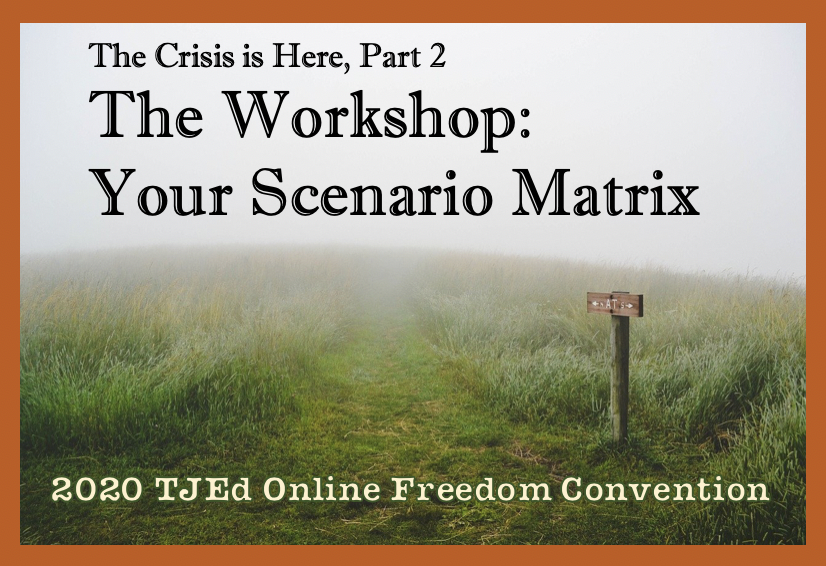 Listened to these talks in the convention today…I am speechless! I had chills the whole time I was listening! I’m excited to go back and do the planning section. Amazing how my perspective has changed so quickly. Going to have my husband listen, too. Thank you so much for this amazing resource!!!
Listened to these talks in the convention today…I am speechless! I had chills the whole time I was listening! I’m excited to go back and do the planning section. Amazing how my perspective has changed so quickly. Going to have my husband listen, too. Thank you so much for this amazing resource!!!
UPDATE: I just now worked through part of the matrix exercise. Wow, how powerful!
~ Rachael Breneman
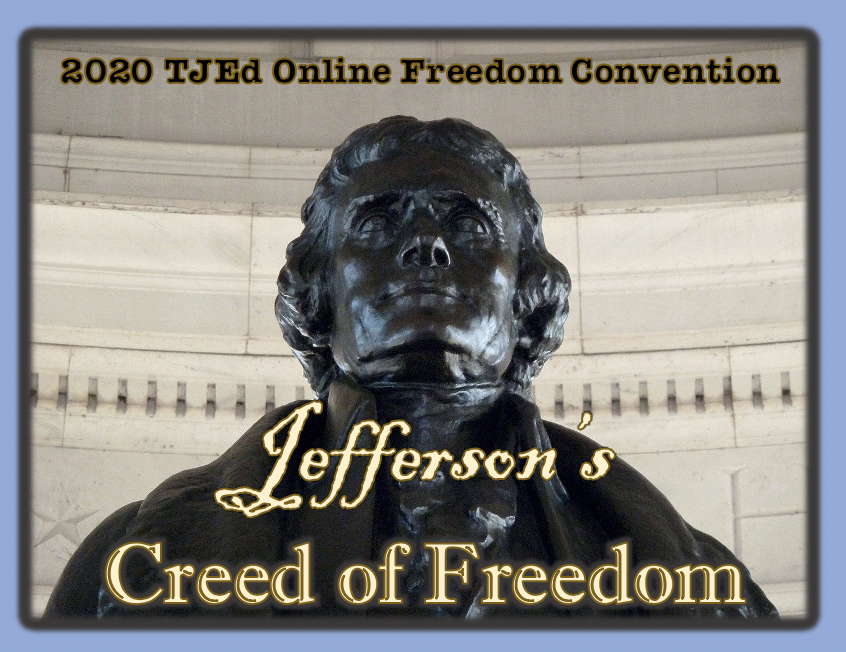 I just want to say thank you to you both. You have sacrificed so much for your mission and so many of us and our children have been blessed because of your sacrifice! I listened to The Crisis is Here part 2 from the 2020 Freedom convention today. On top of the wonderful exercise Oliver led and the incredible insight, I was also struck with how grateful I am that I have been so prepared for this moment.
I just want to say thank you to you both. You have sacrificed so much for your mission and so many of us and our children have been blessed because of your sacrifice! I listened to The Crisis is Here part 2 from the 2020 Freedom convention today. On top of the wonderful exercise Oliver led and the incredible insight, I was also struck with how grateful I am that I have been so prepared for this moment.
It is thanks in a large part to being mentored through TJEd that I have the family culture, understanding of turnings and history, life centered at home, classics on our shelves that teach us human nature, an appreciation for seasons and cycles and the confidence and ability to teach my family. While these times are uncertain, I don’t feel afraid or overly anxious. I’m actually looking forward to the next few decades and what “spring” will bring. I’m excited for my children and I to be a part of it!
~ Amy Updike
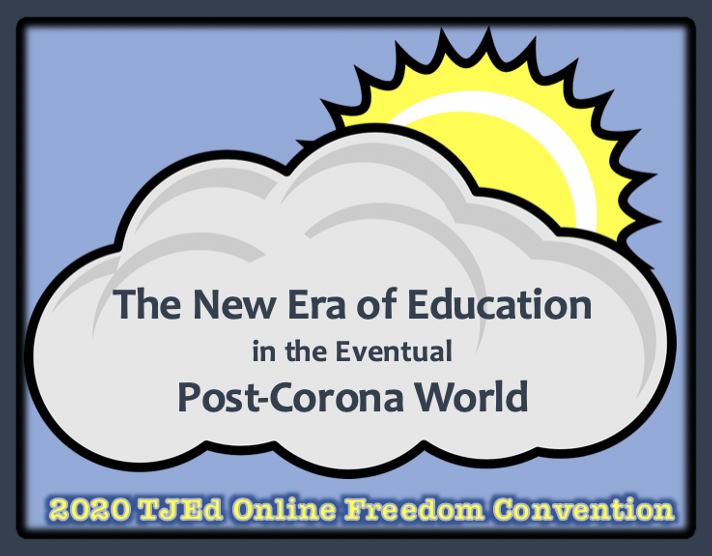 Before any of us realized what happened, the world changed, and it is very likely that for better or worse, nothing will be the same again.
Before any of us realized what happened, the world changed, and it is very likely that for better or worse, nothing will be the same again.
Now what?
I have learned a great deal from Oliver DeMille. The talks he has given already in this convention have really changed the way I am looking at what is happening right now, and he is just getting started.
If you want to know what to do to adapt to our new reality, I’d recommend signing up for this convention!
~ Colby Lyons
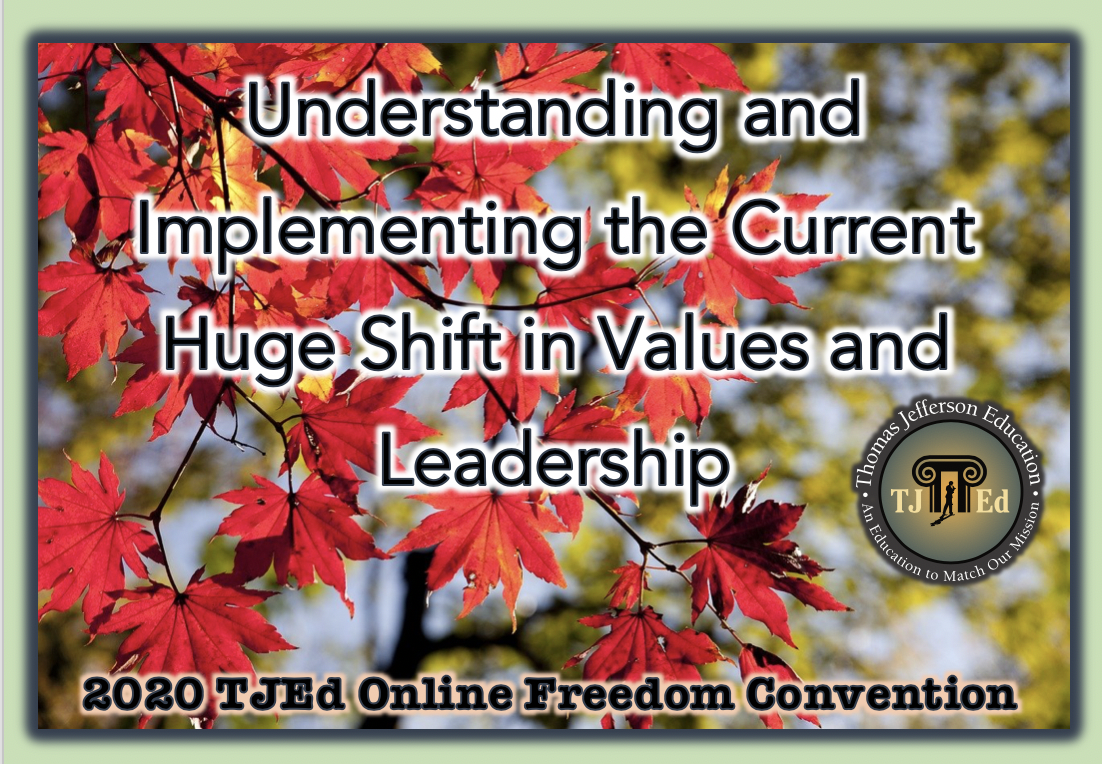 Oliver and Rachel, THANK YOU so much for this year’s convention! We just listened to the 2nd workshop and are so excited for this time in history!
Oliver and Rachel, THANK YOU so much for this year’s convention! We just listened to the 2nd workshop and are so excited for this time in history!
We’ve handled the crisis well because of our faith but this really got us pumped for our future!
My daughter, who is a senior, has struggled a little because she felt so uncertain of her immediate future.
Now, she’s happy and at peace that she is already on the right path to get through this crisis well. She loved the workshops so far! Can’t wait for the rest!
~ Kellee Clark
Watch the video trailer!
Join us for the 2020 Freedom Convention Here!
Special thanks to Lyle Mast of OR Sports for his contribution of 100 family scholarships!
And TJEd is matching that sponsorship to cover an additional 100 families!
If you need this assistance in order to participate in the convention, PLEASE don’t hesitate to request it; that’s exactly what it’s for, and we don’t want you to miss out!
Just click here to inquire and we’ll get you taken care of.
Category : Aristocracy &Blog &Business &Citizenship &Constitution &Culture &Current Events &Economics &Education &Entrepreneurship &event &Family &Featured &Generations &Government &History &Independents &Information Age &Leadership &Liberty &Mini-Factories &Mission &Politics &Producers &Prosperity &Statesmanship &Tribes
News of the Day by Oliver DeMille
October 10th, 2019 // 6:30 am @ Oliver DeMille
It’s Getting Extreme Out There!
October 2019:
 The news is tumultuous these days. Growing threats of impeachment, allegations that the leading presidential candidate broke the law in the Ukraine and China for family gain, the current president accused of numerous mistakes, partisans pointing angry fingers at each other, gaggles of “experts” assuring us that one side or the other is all wrong, wars and rumors of wars. It never seems to let up. Each newscast, day after day, brings the “Breaking News”, which amounts to the latet and worsening allegations, “gotcha” politics, and promises of more to come.
The news is tumultuous these days. Growing threats of impeachment, allegations that the leading presidential candidate broke the law in the Ukraine and China for family gain, the current president accused of numerous mistakes, partisans pointing angry fingers at each other, gaggles of “experts” assuring us that one side or the other is all wrong, wars and rumors of wars. It never seems to let up. Each newscast, day after day, brings the “Breaking News”, which amounts to the latet and worsening allegations, “gotcha” politics, and promises of more to come.
But we shouldn’t be worried about this. Seriously. The news media today isn’t nearly as extreme as it was in the 1830s with its battles between Andrew Jackson and the National Bank. That was a time of major division, anger, and a lot of violence. The 1850s news media was even worse. And the media climate in the Boss Tweed period (1870s), the height of the Muckraker era (1905-1925), and the counter-culture wars of the 1960s were far more divided than anything we now experience. Today’s media extremes aren’t even as tumultuous or noisy as the Jefferson vs. Hamilton conflicts, which were immediately followed by the Jefferson vs. Adams battles. Yes, today’s news is intense, partisan, and adversarial—but nothing as bad as these other times in American history.
We do tend to feel more upset by media extremism today than in the past, partly because television and other audio-visual media are more emotionally engaging than reading things in hard print, but mainly because during the relatively peaceful era between 1970 and 2014 most Americans came to believe in, and trust, the stated ideals of “modern objective journalism”. We bought into media and government as credible sources of true information. In 1973, for example, 42% of Americans had high confidence in Congress (today it’s 11%), and 46% had high confidence in television news (today it’s only 18%). But the era of objective journalism is now largely past, replaced by a return to the kind of turbulent, extremist, and intemperate news media that has been the norm in most free nations through history.
Scientist Carl Sagan described this when he wrote: “The dumbing down of American is most evident in the slow decay of substantive content in the enormously influential media, the 30 second sound bites [now down to 10 seconds or less]…but especially a kind of celebration of ignorance.”Jim Morrison warned: “Whoever controls the media, controls the mind.”
But it turns out that Morrison was wrong on this point. The reality is that in most eras of media peace and quiet politics, freedom quickly declines. When the people are actively battling for their freedoms, politics is full of turmoil and political parties threaten each other with allegations, exaggerations, lies, and name-calling. In a free society, the masses want their government to be peaceful, quietly handling business, and their media professional, trusted, and smilingly civil. But in such times, freedom tends to be attacked and reduced behind the scenes.
In response, the people take notice, and (hopefully) push back—when they do, the politics and media heat up. Historical truth: If there isn’t commotion in politics, the people are losing ground. To get back their freedoms, and their control over the well-funded plans and agendas of elites, turbulence and uproar are needed. Madison told us that the American system was purposely designed so that such uproars would focus on elections, not violent revolutions. Good news: it’s working.
Part of this is easy to keep track of. When the media is polished, quiet, seemingly objective, and widely trusted, the people usually let politicians increase power (and decrease freedoms). In turbulent times like ours, the people see the media for what it is—mostly a propaganda arm of elite power. When the people don’t trust the media, freedom is in better shape than when the people just believe the news. Freedom thrives when the people don’t trust media, or politicians. When they keep a close eye on everything done by government, corporations, media, and elites. Such times are naturally more noisy, chaotic, and confusing. Which is precisely the reason the people pay attention. We are living right now in just such a time. Consider the approval rating* of the following major American institutions right now:
Very High
None
High
The Military 73%
Small Business 68%
Medium
Police 53%
The Presidency 38%
Supreme Court: 38%
The Medical System 36%
Organized Religion/Church 36%
Low
Banks 30%
Public Schools 29%
Very Low
Big Business 23%
Newspapers 23%
Television News 18%
Congress 11%
The fact that the nightly news and Congress suffer such low confidence from the American people tells us that we’re in a better place than most people think. Specifically: The people are watching, and they aren’t buying what Congress and the media are promoting. They just don’t trust these institutions. Only 18% and 11% confidence? Seriously? Of course, guess who tells us the opposite? The media. They’re trying to justify their jobs, and they’re not winning this debate. In fact, it’s getting worse for them the louder and more extreme they become. American confidence in the news media was 24% in 2016, 20% in 2017, and now down to 18%. If they keep this up, they could soon be as unpopular as Congress.
In short, if the nightly news is full of partisan conflict, it means a lot of people are fighting for our freedoms. That’s good news. So smile at the noisy media, and study a little deeper. That’s what good citizens do in times of turmoil. Of course, this doesn’t mean that current events in Washington aren’t important. They are. In fact, they are so important that wise Americans shouldn’t let themselves get distracted by media exaggerations or political in-fighting. Real challenges to our freedom are occurring, but much of what happens is different than the news reports. We all need to stay vigilant—keeping an eye on what’s really going on. When the media is loud and extreme, it’s usually hiding something, so pay attention and dig deeper than the news. And remember: if the media ever turns peaceful, quiet, not much commotion—that’s the time to be even more concerned.
*Source: Gallup
Category : Aristocracy &Blog &Business &Citizenship &Community &Culture &Current Events &Economics &Education &Entrepreneurship &Featured &Foreign Affairs &Generations &Government &History &Independents &Information Age &Leadership &Liberty &Politics
The Jefferson-Madison Debates: HOW TO KILL THE CONSTITUTION (IN 3 SIMPLE STEPS…)
September 3rd, 2019 // 9:43 am @ Oliver DeMille
A Review of 3 Books on the Future of Freedom
[*see titles below]
 If you care about freedom, this article may be one of the most important things you ever read. If you care about the U.S. Constitution, it is definitely this important.
If you care about freedom, this article may be one of the most important things you ever read. If you care about the U.S. Constitution, it is definitely this important.
Some of the most significant proposals to drastically change our political system were recently outlined in several very interesting books. The first that we’ll address here is entitled It’s Time to Fight Dirty, and the stated purpose of this book is to show how Democrats can fully beat Republicans by circumventing the Constitution, or in some cases just the current political system—within the lines, of course, not by coup or overthrow.
Part I: Gaming the Constitution
To get a sense of the scale and scope of the suggestions, consider the specific proposals in question. Whether upon reflection you conclude that these are dangerous and bad ideas, or on the contrary that they are a bunch of really excellent propositions, or whatever you think of them, understanding them is vital for anyone who cares about the future of America, and freedom. Indeed, I am impressed with the author of It’s Time to Fight Dirty for thinking about the Constitution so deeply. I wish a lot more Americans did so. I believe that given the full light of day, most people will support the Constitution rather than move to some other model of government. But as long as most Americans actually know very little about it, we’re in real trouble. This allows the enemies of freedom to tear it down bit by bit while few Americans even bother to take notice.
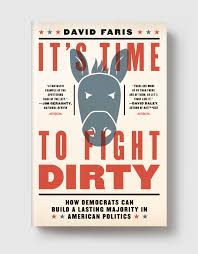 Here are some of the major proposals in It’s Time to Fight Dirty:
Here are some of the major proposals in It’s Time to Fight Dirty:
- “The 58 State Solution”[i]
By increasing the number of states, and carefully bringing to statehood areas that are already solidly “blue”, this suggestion quickly moves the entire nation to the Left. Then, without much effort, more states and more progressive senators can amend the Constitution at will. Leading candidates to become new blue states include the District of Columbia, Puerto Rico, and “Seven Californias”[ii], as it is described in the book (new states created by breaking California into multiple states).[iii]
Problem: In this scenario, the Constitution quickly becomes the plaything of a small group of powerful elites. They redefine it to their benefit. We would witness major alterations to our system, almost overnight, likely all in the direction of collectivist progressivism for the masses, with major exemptions and increased power for a select elite. Freedom would take major hits, and it would get worse over time.
- “The Neutron Option” or “Packing the Court”[iv]
According to It’s Time to Fight Dirty, this entails ending lifetime terms for justices and letting each president appoint 2 members to the Court. Or, as FDR attempted, wait until a Democrat is in the White House and then increase the size of the Court, with the Democratic president adding all the new justices.
Problem: Court-packing is, of course, always going to be a hyper-partisan venture, but the purpose of the third branch of government is to uphold the Constitution, not decrease its authority, or simply change it (or water it down) without Amendment. Either approach—Neutron or Packing—would almost certainly end the back-and-forth battle between conservatives and progressives, and thus disenfranchise about half the nation’s voters. The implementation of these proposals would mean Court-mandated changes to our entire system—and about half the nation’s voters would be permanently out of government power in all three branches–likely, forever.
- Scrap the Electoral College[v]
In this proposal, we would elect presidents by a straight national popular vote.
Problem: If the president is elected by straight national majority vote, none of the little states, or less populated states, will have much say in who rules the nation. The Framers wanted a prospective president to have to win “majorities in a majority of states”, with the impact of each state’s majority weighted by population. This is a little complex, but it keeps people living outside big cities, and in small and sparsely populated states, involved in our democracy. Without the Electoral College, most people who live outside the biggest cities and most populous states would have practically no say in electing our leaders. That’s oligarchy, not democracy. Pure national-level democracy is the reason the Framers believed that big republics can’t work; Madison argued at the Constitutional Convention that they can work, as long as we’re smart about it—like using a “majority of the majority of states” rather than a simple national majority that disenfranchises the voters in all but the most populous states.
- Move to a Parliamentary System[vi]
This means allowing the president to be elected not by a majority of the electoral votes, but rather by the highest percentage of votes (a plurality). In other words, we’d transition from two major parties to a bunch of parties, scrap the Electoral College, and—for example—the person getting 29 percent of the vote, would win—as long as no other candidate got more. So, in this theoretical example, the Democrat gets 29 percent, the Republican gets 27 percent, Democratic Socialist Party gets 12 percent, Green Party candidate gets 10 percent, Violent White Nationalist Party gets 1 percent,[vii] Violence Against Conservatives Party gets 2 percent,[viii] Silicon Techno Party gets 8 percent,[ix] Rust Belt Jobs Party gets 9 percent,[x] and several other parties get a few thousand votes each. Various parties can even combine their votes together in order to win and then divide up the spoils.
Problem: In this model we would tend to get more extreme presidents in each election, because candidates would have little or no incentive to appeal to the center of their own party, much less to the center of the whole nation in general elections. Special interest money would centralize to an even more elite few—causing increased top-down government by a small ruling class. It’s the Military-Industrial-Bureaucratic-Complex on steroids. To make this even worse, the leadership of Congress in this system would always be the very same as the White House, cancelling most of the value of checks and balances between the Executive and Legislative branches. No more Constitution—at least in reality. Gone. Fin. Over. Many freedoms would go with it.
Overall, my perspective is that most of these proposals could, arguably, destroy the Constitution in the process. It’s Time to Fight Dirty justifies this by arguing, in essence, that Republicans started it, that they began the dirty (outside the Constitution) tactics. In fact, this is partly true. The establishment wings of both major political parties have ignored or skirted the Constitution in a number of ways over the course of many decades. Even if Republicans were the only ones to ever undermine the Constitution, however, Democrats (or anyone) choosing to do this a lot more frequently and even more effectively is not good for our nation.
If you believe, as I do, that the Constitution is the best system humanity has developed so far for maintaining genuine freedom in a lasting fashion, anything that undermines it is ill-advised. While the Constitution began with the glaring flaw of allowing slavery, the system it established eventually found ways to overcome this, and a number of other ills, with a lot of pain along the way—and in the process provided more freedom and opportunity to more people than any other governmental form in recorded human history. Destroying it, especially with the short-term goal of winning partisan political battles (no matter which side you’re on) is not a good plan. If the Constitution is destroyed, or significantly weakened, I’m convinced we’ll witness a massive loss of freedom, opportunity, human dignity, prosperity, and happiness for people on all levels of the socio-economic scale in the following fifty years—not just in the United States but in many places around the world—and that it will take decades, perhaps centuries to get back to the level we now enjoy. We don’t want to go backwards; we’ve got too many problems right now that we need to solve, so we don’t want to get stuck just trying to get back to where we already are.
With this at stake, undermining the Constitution makes party agendas look shallow, even petty. I understand that many issues held dear in both parties are infused with high levels of passion in the current environment, and have been for at least the past twenty-five years (and escalating), but from the larger perspective of history they are still trivial in comparison to undercutting the U.S. Constitution. Both sides greatly benefit from its protections, year after year. And nothing I’ve seen proposed to date is anything close to better, or even as good.
It’s important to note that the author of It’s Time to Fight Dirty does outline some very good ideas, putting an end to gerrymandering, for example. It’s also true that Republicans have pushed a number of “dirty” plans, from widespread gerrymandering (realigning voting district boundaries in a way that “your” party will win more elections) to the “W” Bush administration investigating political opponents in election years (accomplishing very little in legal terms, but casting negative light on those running against them). Like twin toddlers tussling in the playroom, it’s hard to honestly say which party first started the “dirty” tactics—just look at local and state elections through U.S. history. Both parties are to blame for undermining the Constitution.
But that’s real the point: Weakening the Constitution for partisan goals is shortsighted and, ultimately, bad for America (and beyond).
Part II: Deep State Rules
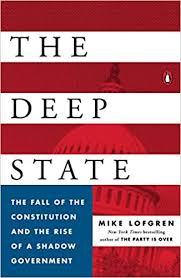 With all this said, the proposals in It’s Time to Fight Dirty aren’t actually the worst “dirty” plans to undermine the Constitution. For example, some have proposed “tanking” the economy to stop the reelection of a president they don’t like, by manipulating interest rates through the Federal Reserve or getting a consortium of wealthy banks, billionaires, and other entities with major financial clout to take steps that bring the economy down—“just until after the election” that they want to go their way. Or consider the rising power of the deep state, bureaucrats working within the government who simply use their influence and authority to push personal or partisan agendas—regardless of what the laws require. This is deep power. It also cuts against the positive goals of both major parties, and hamstrings their winning candidates—Reagan and Clinton, Obama and Trump, etc.
With all this said, the proposals in It’s Time to Fight Dirty aren’t actually the worst “dirty” plans to undermine the Constitution. For example, some have proposed “tanking” the economy to stop the reelection of a president they don’t like, by manipulating interest rates through the Federal Reserve or getting a consortium of wealthy banks, billionaires, and other entities with major financial clout to take steps that bring the economy down—“just until after the election” that they want to go their way. Or consider the rising power of the deep state, bureaucrats working within the government who simply use their influence and authority to push personal or partisan agendas—regardless of what the laws require. This is deep power. It also cuts against the positive goals of both major parties, and hamstrings their winning candidates—Reagan and Clinton, Obama and Trump, etc.
This should concern all voters—your power over who rules you is simply rejected and ignored. In this reality, elections matter very little. And, unlike the relatively straightforward proposals outlined above, this occurs almost entirely in secret. Even the media may take months or years to realize what’s actually going on. If the suggestions above are ill-advised, this approach is downright corrupt.
But it’s not theory. It’s already happening. The deep state threat is real, and amounts to:
- Ignoring Elections
This doesn’t mean the people ignore elections, or the media, or even our elected officials. Our freedoms are never in worse danger than when actual agents of the government, federal employees in any or all of the three branches, especially in executive agencies and courts, ignore Congress, the White House, the courts, and even the law. They make decisions, or don’t, without letting anyone else consider what is needed, and influence our lives in a thousand other little ways. Sometimes these become big issues in individual lives, but we are informed of the bureaucratic mantra: “That’s just the way it is.” This is real power. It always undermines freedom, and it frequently hurts people. It has now reached the level of pandemic, though it remains largely in the shadows. It is a serious abuse of the Constitution.
In fact, the challenge from the deep state is much bigger than most people realize. Consider the following comment by Senator Mike Lee:
“I keep two towers of documents in my Senate office. The first is only a few inches tall. A collection of all the legislation passed by Congress in [a year], it contains about eight hundred pages. The second tower, which is eleven feet tall, is a collection of regulations proposed and adopted by federal agencies in [the same year]. It contains about eighty thousand pages.
“These extraordinarily unequal towers illustrate a startling reality: The U.S. Congress no longer passes most of the federal laws, rules, and regulations that are imposed on the American people. While a mountain of those rules are decreed by an army of unelected federal bureaucrats, only about 1 percent of the rules we must live by are enacted by the most accountable branch of government—Congress.”[xi]
This dangerous reality led one author to write a chapter entitled: “Do Elections Matter?” The title of the book, written by Mike Lofgren, is The Deep State: The Fall of the Constitution and the Rise of a Shadow Government. Perhaps the most consistent theme I noticed while closely reading this book is how many congressmen, senators, and presidents from both parties are now (or have been) in numerous ways subordinate to the bureaucracy.[xii] Not officially, and not in the minds of the regular people, but actually, in real life. It is the bureaucrats who provide elected and many top appointed officials (in all three branches) with the information they use to make powerful, life-impacting decisions on many fronts, and it is usually bureaucrats (often the same ones) who implement such decisions after they are made. If the top official has questions or misgivings about the information that is provided, he/she typically turns to experts for further clarification—such experts are nearly always the same, or other, bureaucrats.
Shadow government, indeed. Unknown. Powerful. Anonymous as well, at least in any practical sense. And while many of these people have amassed decades of employment seniority, they typically face no accountability to voters. They seldom face real accountability at all.
Part III: Quantocracy[xiii]
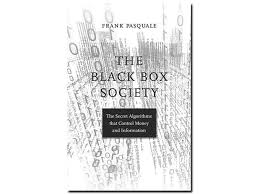 Another major attack on freedom and the Constitution comes from what Frank Pasquale terms, simply:
Another major attack on freedom and the Constitution comes from what Frank Pasquale terms, simply:
- The Black Box Society[xiv]
This consists of a number of secret algorithms, owned and utilized by various corporations and government agencies. These algorithms, and those who control them, exert significant power over people, organizations, and even governments. They interfere in our elections (all of them, at least at the national level, and many others as well), and in those of other nations. They are even more shadowy than the deep state, and many of them operate without governmental oversight—working for banks, big tech, consulting organizations, Wall Street and Silicon Valley firms, investment, finance, big data, and governmental intelligence agencies in the U.S. and abroad. Orwell’s warning is now reality: they are watching. Some for profit, others in the name of security, still others for information, influence, and/or power.
According to Pasquale, and the ample research he shares in his book The Black Box Society, algorithms and their proprietors literally “control money and information” in the current economy—not only in the United States but around the world.[xv] Pasquale wrote: “As technology advances, market pressures raise the stakes of the data game. Surveillance cameras become cheaper every year; sensors are embedded in more places. Cell phones track our movements; programs log our keystrokes…”[xvi] Devices in our homes, televisions, cars and businesses listen, watch, and record. “The resulting data—a vast amount of data…—is fed into databases and assembled into profiles of unprecedented depth and specificity. But to what ends…?”[xvii] Who controls it? And who could control it next month, next year?
Whatever the answers to these disturbing questions, many of the institutions that collect and control such information about each of us also have direct power over important parts of our lives. Do we qualify for a loan? The algorithms, and those who program them and later analyze their data, decide. Do our politics lean Left or Right, and based on this what news stories and feeds will appear when we search for information online? Will our messages sent be delivered, or “lost”, “masked”, “shadowed”? Will the things that appear when we search online support our leanings, or purposely seek to change our views? Can third parties pay for what they want us to see and read? Can they, in effect, buy us, by buying the information they want us to encounter—information tailored specifically to each of us, digitally individualized, designed to sway our specific beliefs and actions in ways that benefit the buyers? Will they guide us to the kind of news, purchases, investments or connections we want, or those that someone, somewhere, has determined would be best for us? Or for them? All of this is within the power of Black Box algorithms. Moreover, this is already the norm in many ways.
Important question: Is such power subject to any limits, checks or balances, even when it is wielded by government entities or agencies? If not, this undermines the Constitutional structure of adequate limits, checks and balances on all powers delegated to the federal government.
Obviously the Framers didn’t specifically strategize Constitutional safeguards against the government operating (or piggy-backing) algorithms to electronically data mine or apply predictive analytics toward the citizens. But their intent in this arena is clear from the Fourth Amendment language concerning protections from searches of “persons, houses, papers, and effects.” Freedom is undermined when personal or business information is being collected, stored, owned, or analyzed by government or other power organizations—whether it is called “mining”, “surveillance”, “data”, “analytics,” “metadata”, “sessionization”, “mix modelling”, “stemming”, “event processing”, or anything else. This applies to “cloud”, “cluster”, “lake”, “IoT”, “ETL”, “CEP”, “hive”, and anything else that originally belongs to or comes from one person or private group.
Dressing it up in technical jargon doesn’t make it okay for the government or any other powerful computationally-enhanced entity to just take it, or use it, no matter how fancy the math. Perhaps the United States needs to follow the example of Estonia and teach computer coding to all students in elementary schools.[xviii] If our citizens are going to rule their own nation, they need to read and understand our Constitution, and perhaps also read and understand the codes and algorithms their government and other entities can use to control the people.
“We hold these truths to be self-evident, that all men are created equal, except those who code, and especially those who hire the coders and control the coded algorithms and information: some are more equal than others…”
Part IV: The Big Twelve
Orwellian references aside, today’s American citizen is at times alarmingly unaware of the threats to freedom. Consider, for example, the following “declarations” proclaimed by Google in its early years, and still espoused by many tech industry insiders in the U.S. and abroad:
- “We claim human experience as raw material free for the taking. On the basis of this claim, we can ignore considerations of individuals’ rights, interests, awareness, or comprehension.”[xix]
- “On the basis of our claim, we assert the right to take an individual’s experience for translation into behavioral data.”[xx]
These are the first two of six such declarations. The others claim the right to own whatever data they take, and to use it however they choose.[xxi] The message is clear, albeit shocking: Someone owns us. This is not good for freedom, except the kind of elitist “freedom” (license) that does whatever it wants, whatever it can get away with. One author called these six declarations the beginning of a new “age of conquest”.[xxii] The strong conquer, rule, and label it “freedom”, “democracy”, “social democracy”, or whatever they choose to call it. This new reality, the new economy, if it succeeds, is built on the poignant question: “Are we all going to be working for a smart machine, or will we have smart people around the machine?”[xxiii] Either way, the hierarchy is top-down, with most people living as part of the “down”.
The real question is right in front of us: “Who knows? Who decides? Who decides who decides?”[xxiv] If so much information about you is legally owned by a Black Box somewhere, and those who control it, and if the owners have all the rights concerning this information, what parts of you are owned by others? And if the owners have the right to convert this information into behavioral data, to analyze it and use it to model your tendencies, to buy and sell it to others, and to directly influence your choices using this same data, how much does this impinge upon your freedom?
For example, if there are five possible paths for a baby to take when he crawls through the doorway leaving his room, but he can only actually see or hear three of these paths, is he really free to take either of the two paths that he can’t detect? This logic applies to the information we access, and all entities (governmental, corporate, and combined) that gather and utilize information about us. If there are five options we can choose from in making a life decision, big or small, and the data collected about us is used to ensure that we are only informed about three of these options, is our freedom reduced? (Some would say “stolen”, or “usurped”.) If a for-profit entity like a bank or corporation does this, what term would we use to describe this action?
What about a “for-power” organization such as a government, activist media outlet, big tech firm, activist online platform, or political consultant hired to target certain voters to make specific choices on election day? How much does such a consultant get paid for your vote? And are such payments for votes legal? What if the payments go to First-Amendment-protected media organizations that are compensated specifically to influence your vote—albeit “indirectly” by paid advertisers who are part of the side arrangement? Can votes be bought? If so, can they also be sold? What if those same media or online platform organizations receive government subsidies, contracts, or tax breaks—and the way they sort and deliver information to you, and how you vote based on the information they provide (or withhold), impacts the level of money (or resistance) they receive from the government?
“Black Box”, indeed…
We are in the “undiscovered country” of 21st Century governance, legality, morality, psychology, technology and business. Which rules are new? Which do we know about? What don’t we understand?
It is this last question that always leads to the loss of freedom—from Ancient Greece, Babylon or Egypt to medieval Italy or modern Ukraine, Egypt, Ohio, or California. Arrogantly, in the United States we tend to think we are on side of “knowledge”. But do we fluently speak R, Python, or Julia, not to mention the really cutting edge dialects of digitized power? Have we even heard of these, or know why they matter? We don’t know what we don’t know—yet we the citizens are supposed to be in charge of our nation. According to Forbes, in 2019 “Data Science is the best job in the U.S. for the last three consecutive years.”[xxv] But how many people with these jobs make the actual decisions—the big ones that steer society? Answer: none. They work for the decision makers, corporate and governmental.
How many government and corporate projects, and technologies, are now dedicated to “behavioral modification”? And do they mainly target conservatives and libertarians, or liberals and progressives? While the blue and the red argue about the issues of the day, passionately pointing fingers at each other, the quiet answer is unflinching: Both. All. Everyone.
We are at times duped by the sideshow. The nightly news broadcasts and hourly feeds keep us tied to the reality-TV shows we call political news. But the worst assaults on freedom frequently happen off-stage. Unless we know where to look, we don’t even notice. We think the news is real. It is often a lot more like clever theater. Is the answer to learn coding, to study C++, SQL, and other big data languages? Or to become a data scientist and infiltrate Silicon Valley? Is working for the “big nine” the path to leadership in our time?[xxvi] The “big nine” are Amazon, Google, Facebook, Tencent [China], Baidu [China], Alibaba [China], Microsoft, IBM and Apple. The “big twelve” are the same corporations plus the big-data arms of the U.S. government, the Chinese government, and the Russian government, and the workers and thinkers in the “big twelve” community are in some ways more closely connected than most Americans are to each other. The divisions between them, especially those based on the letterhead in their offices,[xxvii] are often much less significant than the blue/red divide in American life. The real story is happening, but often goes unnoticed.
In short, the solutions won’t likely come from within the technology institutions or culture, mainly because expertise is now a “for-hire” sport, not a “change the world” activity. Working for an employer almost always means furthering their agenda. To effect significant change, in contrast, one must engage more entrepreneurial pursuits. Enterprise remains by far the most effective vehicle of innovative leadership.
Part V: Three Steps to Kill the Constitution
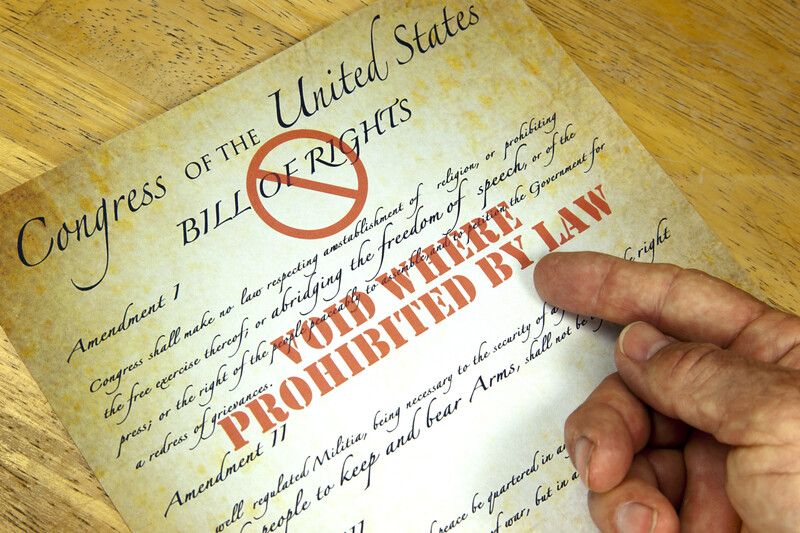 In this atmosphere, with the U.S. Constitution pulling in one direction and so many opposing forces pulling the other, how can humanity’s best chance at genuine freedom win the day? The Framers were clear from the very beginning that the Constitution’s success depended on the regular people. If they couldn’t rise to the occasion, the Constitution wouldn’t last. Benjamin Franklin put it succinctly. When asked by a citizen what kind of government the Convention had created, he replied: “A republic, if you can keep it.” He put the onus for Constitutional success on the regular people. It remains firmly in the same place today, though few people actually realize it.
In this atmosphere, with the U.S. Constitution pulling in one direction and so many opposing forces pulling the other, how can humanity’s best chance at genuine freedom win the day? The Framers were clear from the very beginning that the Constitution’s success depended on the regular people. If they couldn’t rise to the occasion, the Constitution wouldn’t last. Benjamin Franklin put it succinctly. When asked by a citizen what kind of government the Convention had created, he replied: “A republic, if you can keep it.” He put the onus for Constitutional success on the regular people. It remains firmly in the same place today, though few people actually realize it.
In a sense, “killing” the Constitution in our day is an easy task. Get the people to forget it, ignore it, and fail to study it closely or frequently. Check! Done. Step one is accomplished.
The other two steps have proven more difficult, despite the efforts of the sharpest minds elite money can buy and the generational funding of massively endowed and funded universities, trusts, media corporations, K-Street special interest lobbyists, the great banks, and a host of storied private foundations and think tanks. The combined wit and treasure of the elite classes haven’t quite been able to pull it off.
This is all a shocking surprise, to tell the truth. How can the ignorant masses face off against the biggest and best and richest and most ruthless, and keep coming out on top—without even understanding why, and in most cases without even realizing what they’re doing? It defies logic.
The challenge resides in this little-publicized fact: the American Framers predicted the elite, multigenerational onslaught against their most important work (the U.S. Constitution), and they drummed up a little “algorithmic computational code” of their own. So far, it’s been battered, repeatedly put under siege, and even cracked a few times, but it hasn’t quite broken. Much of the “code” remains intact, and the “algorithms” have proven both resilient and, shockingly, self-healing and self-improving.
The Constitution Code
The Framers’ formula is, in a way, a self-protecting AI. Every American should know it and understand it. But very few do. Here’s how it works:
- Governments exert power.
- This is good when the power is used to protect the life, liberty, property, and inalienable rights of the citizens.
- It is bad when that power is used against the people, usually by elite groups (inside or outside the government) striving to increase their own power and status at the expense of the masses.
- The challenge is that no group other than the masses ever adequately protects the people’s interests and inalienable rights, yet the masses themselves tend to get distracted from doing this on their own.
- The solution to this dilemma begins with dividing the elite groups of power into separate cliques and convincing/incentivizing them to limit, check and balance each other—hopefully dissuading them from joining forces and taking away the rights of the people and simultaneously giving themselves control of the nation’s resources.
- Such a solution is complex and difficult, but can be achieved by what Jefferson called “dividing and subdividing government” in multiple ways that keep elites from combining their forces against the masses. The key is to keep the elites focused on battling each other.
- The U.S. Constitution established just such a system and result.
- It had various initial flaws, particularly slavery, but the overall structure incentivized improvements over time; many of the flaws were fixed, and the basic direction and protections grew in strength and momentum. Elites battled each other in numerous ways, but the masses unwittingly kept most of their freedoms intact. The process was painful and imperfect, but it kept improving, albeit not rapidly. Groups with fewer freedoms slowly gained more, usually without reducing the overall freedoms of the whole society. The “code” worked.
- The system contracted certain viruses as time passed. One, the old virus of class division, infiltrated the code largely by reviving political party conflict. The parties grew in power, and threatened the entire balance.
- Another virus, also an old standby of past governmental decline, came in the form of elite corruption in the halls of power. This grew over time, patiently spreading its tentacles into institutions of influence—both public and private. The two viruses learned to work together, mainly through political parties and other special interests (including academia, media, and big business).
- Both of these dangerous viruses wormed into the Framers’ code, but found themselves strangely limited. They were able to flourish, but not win. Both operated on the assumption that power, wealth, and knowledge eventually win the day, only to discover that the Framers had anticipated this and prepared accordingly. All the power, education, expertise and funding the elites could bring to bear were thwarted by the Framers’ “algorithms”—the people didn’t wither under such attacks (as expected, based on thousands of years of historical precedent), nor did they try to directly fight back (as also anticipated). Instead, they simply took note of, or even ignored, the plans of elites. This was quite unexpected, and quite unprecedented. The Framers’ “code” thrived.
- But how? How did the masses win in such circumstances? How did the “code” change things? The answers are unconventional and, as mentioned, largely unprecedented. Benefiting from the Founding model, the people exerted voting power in a strange way: regardless of the words of experts, or the powerful spin of academia and media and money, they instinctively pushed back against much of what the elites promoted. The masses seemed to have a sixth sense in these matters. If the elites wanted it, the voters pushed against it. Whatever the elites did to promote their agenda, the regular people quietly, usually without openly realizing it, sensed the pressure and voted against it. Sometimes they failed to do this in a single election, and more rarely for two consecutive elections. But never for three or more. No matter the actions, plans, schemes or grand strategies of the elites, the masses instinctively voted the contrary. They did this even when political parties rose up and tried to inflame the masses to extreme reactions. Many were fooled by this powerful strategy. But when the elections came, the electorate pushed back against the wishes of the elites. Not logically, but emotionally. And, again, they did this quietly, in most cases without fanfare. Elites often didn’t actually know what was coming until election night. This happened numerous times in modern day. In the recorded annals of history, this was new. The Framers’ code created a system where the people, the masses, experienced a new power, a new sense of when elites are pushing for something, and how strongly they are pushing, and a corresponding incentive to push back en masse.
- This pattern indeed flew in the face of three millennia of written history, but the Framers, who knew this history as well as any generation before or after, coded it into the cells, cell walls, and very syntax of the system. And it held, despite massive pressure brought against it in multiple formats and from all directions.
- It still holds today.
When the U.S. Constitution has been altered by legitimate Amendment, this Framers’ “code” has strengthened. When it has been circumvented or diluted by “dirty” tricks, weaknesses have appeared. Note that this includes both unconstitutional changes (such as Court decree rather than following the Amendment process, etc.), and also alterations that are technically not unconstitutional, but are still “dirty” because they violate the intent and design of the Framers. Again, it’s worth repeating that both major political parties are guilty of many dirty tricks of this sort.
Now, down to details:
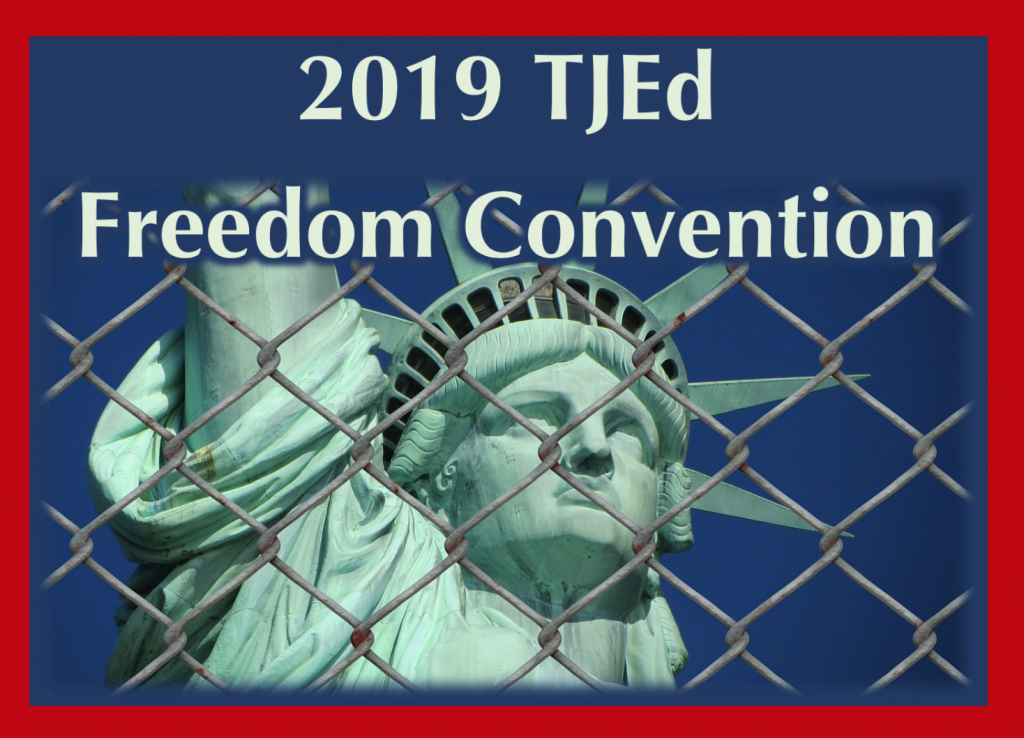
https://tjed.org/product/2019-tjed-freedom-convention/
Step One of Killing the Constitution is to get the masses to shirk their duty to study, know, revere and masterfully apply the Constitution. As mentioned, this is a fait accompli. The enemies of the Constitution have won this part of the battle, at least for now.
Step Two is to get the masses to stop instinctively pushing back against elite agendas and proposals that in any way raise elites above the people and threaten to lessen the freedom or rights of the regular people. To date this has been repeatedly and aggressively attempted, but it hasn’t worked. Not in big ways. The Constitutional code has been weakened some, but not beaten. The Framers’ “algorithms” are working.[xxviii] Note that they work in part by pitting elites on the Left against elites on the Right, and vice versa. While these opposing camps of elites think they are battling each other, they frequently serve to warn the masses about each other—greatly influencing elections, but not in the way elites expect. Elites on both sides tend to believe that when they “expose” elites on the other side they will strengthen their own side—the reality tends more to exposing all elites. Again, this was part of the Framers’ intent, or “code”.
Step Three is to get the few on the side of the masses who deeply understand the code (Albert Jay Nock called them “the Remnant”) to give up, switch sides and join the elites, or stop passing on Remnant-level knowledge and depth to the rising generations. This has proven impossible. The enemies of the Constitution have achieved no significant victories concerning this Step. Today’s Remnant are strong—people who love freedom and understand the Constitution deeply, one could say “algorithmically”, at the level of the Framers themselves.
Conclusion
Throughout the history of free nations, there are constant attacks on freedom and the principles upon which freedom is built. This remains the rule in our world today. The U.S. Constitution, under which more genuine freedom has been experienced by more people than in any other government in recorded history, is a powerful framework for freedom, and it is the best hope for continued freedom for the masses (and also the elites) in the years and decades ahead. Attempts to undermine the Constitution are many. They appear in multiple ways, both old and new, each year, many times a year, employing a variety of sources, methods, and tactics.
This will no doubt continue as long as we are free. As such, it is a good thing, an ongoing sign that people are using their freedoms to explore many options, question what works, and seek solutions to the real problems we still face. But freedom is not guaranteed. Historically, it is quite fragile. It only lasts when the people effectively stand up for it. It disappears when the masses fail to demand it. It is always, as Ronald Reagan warned, just one generation away from extinction. If we don’t protect it, we will lose it. If we are distracted, too busy, or too lazy or ignorant to fight for it, we deserve to lose it.
As mentioned, the First Step in destroying the Constitution is already accomplished. The Third will never be achieved. It is to the Second Step that the enemies of freedom amass their energy. They wield the might and power of all the money in the world, the wit and wisdom and will of the biggest and most prestigious institutions on earth, and the force of many in government, banks, universities, media outlets, corporations, foundations, experts and armies.
Against this stands the yet unexplained habit of the American people to sniff out elite schemes and vote them down, sometimes swinging Right and other times Left in a seemingly illogical, uncanny, and incredibly potent pattern of effective choices—decade after decade. Their actions are far from perfect, and they are not coordinated, yet so far they have kept the regular people’s place above all the polish, erudition and stratagems of the world’s so-called “best and brightest”—those in financial and political power.
Still, little by little, the enemies of freedom whittle away around the edges. Over time, this reduces freedom, slowly but surely. Today this erosion is approaching a serious danger point—especially if “dirty tricks” steal away the Constitution in ways that further undermine its effectiveness. We are living in the times described by W.B. Yeats:
The best lack all conviction, while the worst
Are full of passionate intensity.
Will the American voters at some point lose their proven “sixth” sense of quietly rebuffing elite agendas? If so, will this happen soon? Or, more specifically, will those who hate our Constitutional freedoms find ways to destroy the system that endows the regular people this power? The pressure to do so continues to build.
(For more on this topic, including effective solutions, read Oliver DeMille’s book Freedom Shift: 3 Choices to Reclaim America’s Destiny>> )
*Books Reviewed:
- It’s Time to Fight Dirty: How Democrats Can Build a Lasting Majority in American Politics, David Faris, 2018/2019, Brooklyn, New York and London: Melville House
- The Black Box Society: The Secret Algorithms that Control Money and Information, Frank Pasquale, 2015, Cambridge, Massachusetts: Harvard University Press
- The Deep State: The Fall of the Constitution and the Rise of a Shadow Government, Mike Lofgren, 2016, New York: Penguin Random House
NOTES
[i] David Faris, 2018, It’s Time to Fight Dirty: How Democrats Can Build a Lasting Majority in American Politics
[ii] Ibid.
[iii] Ibid.
[iv] Ibid.
[v] Ibid.
[vi] Op. Cit., Faris
[vii] No such party actually exists, at least not as such; hopefully, of course, nothing of the sort ever will, or get anything near 1% support in the electorate.
[viii] Ibid.
[ix] Ibid.
[x] Ibid.
[xi] Mike Lee, 2015, Our Lost Constitution: The Willful Subversion of America’s Founding Document
[xii] Mike Lofgren, 2016, The Deep State: The Fall of the Constitution and the Rise of a Shadow Government
[xiii] Quantocracy: Government Rule by Algorithms and Quants
[xiv] Frank Pasquale, 2015, The Black Box Society: The Secret Algorithms That Control Money and Information
[xv] Ibid.
[xvi] Ibid.
[xvii] Ibid.
[xviii] Questions: Does Estonia still do this in 2019? Have any other nations followed suit?
[xix] Cited in Shoshana Zuboff, 2019, The Age of Surveillance: The Fight for a Human Future at the New Frontier of Power
[xx] Ibid.
[xxi] See ibid.
[xxii] Ibid.
[xxiii] Ibid.
[xxiv] Ibid.
[xxv] Cited in bigdata-madesimple.com
[xxvi] Amy Webb, 2019, The Big Nine: How the Tech Titans and Their Thinking Machines Could Warp Humanity
[xxvii] Anachronistic? Probably.
[xxviii] The American Founding era phrase for what we might term a sort of political “algorithm” was “auxiliary precautions”.
Category : Aristocracy &Blog &Book Reviews &Business &Citizenship &Community &Constitution &Culture &Current Events &Economics &Education &Entrepreneurship &Featured &Foreign Affairs &Generations &Government &History &Independents &Information Age &Leadership &Liberty &Mission &Politics &Producers &Statesmanship &Technology
THE JEFFERSON-MADISON DEBATES: A New Cold War is Coming PART II
June 11th, 2019 // 7:41 am @ Oliver DeMille
What Americans Can Do To Effectively Protect American Freedoms in the Decades Just Ahead
(Book Review of American, by Shanon Brooks)
Note to reader: read Part I of this report here >>
I. The Challenge

The 21st Century is shaping up as an era of major conflict, between (1) the three superpowers (the U.S., Russia, and China) and their allies and proxies (the European Union, Israel, North Korea, Iran, etc.), and also between (2) the Red- and Blue-state cultures that are further dividing America. If the U.S. doesn’t fix the problem (2) above, it will almost certainly lose the first battle (1) to China and/or Russia.
But what can regular Americans actually do? What will really work?
The three most effective things Americans can do to maintain our freedoms, families, and leadership in an increasingly dangerous world are:
- Spread great, classics- and freedom-based, leadership education
- Engage entrepreneurialism, the key to free enterprise, and encourage/help others to do the same
- Vote correctly and influence other voters to do the same (to protect and increase freedoms), and effectively influence government between elections
The battle for world leadership will come down to how well Americans do these three things. If we don’t win this battle, the world by 2040 will likely be run by two superpowers: China and Russia. Freedom values will be at odds with the rest of the world, and greatly reduced in the United States. Socialism will be the norm from the California redwoods to the beaches of Florida, from the Midwest to the Plains, and from the Rockies to Maine, in the cities and farms, and across all fifty states. Many of our most cherished freedoms will be reduced, or stolen.
How can we ensure that this doesn’t happen? A new book addresses this very question. This may be one of the most important books of our time; if we read and understand it, and take the right action, the future of America, our freedoms, our economy and our families, will be bright. If we don’t take the needed action…freedoms will be lost, socialism will spread, and families will suffer.
The book is titled simply, and sagely, American.
II. The Journey
Indeed, the title says it all. Written by Shanon Brooks, American gets to the heart of the problem, and the solutions. As Brooks puts it: “…we are killing the American Dream. Out of the top 30 countries in the world, the U.S. ranks 16th in literacy…and 14th in problem solving.”
Does that sound like a superpower? Or more like a past leader currently in decline? If we’re only 14th in problem solving, how can we truly expect to lead in the decades ahead, to tackle and solve our greatest problems, to help lead the world as it faces and overcomes the challenges ahead?
But the problem is even more daunting. Brooks wrote:
“National unfunded obligations are more than $100 trillion while U.S. household debt is at an all-time high of $13.2 trillion. We have one of the most litigious societies in the world, our incarceration rate is among the highest globally, and our state and federal legislatures are convinced that they are our cradle-to-grave caretakers.”
Unless something changes soon, and in major ways, we are not on the path to increased freedoms or economic opportunities for our children or grandchildren. In fact, we are quickly headed in the opposite direction.
As Brooks notes:
“How can we claim that America is the greatest nation in the world when 60% of our population can’t even pass the U.S. citizenship test? What have we done with the legacy of liberty that the founders so carefully crafted for us? And what are we creating to pass down to our children and grandchildren?”
The problem is real. The divide between those who even care about freedom and those who don’t is quickly expanding. And the root of the problem is at the very core of our daily lives: how we are educated, how we make a living, and how we participate (and don’t participate) as citizens overseeing and governing our own nation. As Travis Slade notes in the preface to American: “Pretty much everything about how we live today is killing the American Dream.” He’s right. And this book, American, is much more than a handbook on the principles of freedom—it’s all about how to apply those principles in the world today, in this economy, given the reality of the world we actually live in. Along the way, it addresses real issues across the board, including:
- Our Decaying Education System
- Our Work Life—Pros and Cons
- The Way People Vote and Otherwise Participate (or don’t) in Overseeing Our Government
- Commercial and Residential Construction
- The Health Care Industry
- The Transportation Industry
- The Food and Grocery Industry
- Local Law Enforcement
- The Issues of Immigration
- The Regulation State versus Free Enterprise
- Socialism versus Investment
- Employee versus Owner Mindsets
- Federal Government Overreach
- …Etc.
American asks us to seriously consider a number of poignant questions, questions that our national school/education system has patently taught us not to ask—or even think about in any meaningful way.
For example: “How can the American Dream be alive when each new American baby…inherits $300,000 of national debt…?”
And “…bureaucracy so deep and stifling that most just give up and give in.”
This book describes an America the Framers wouldn’t even recognize, a nation deeply entrenched in a bureaucratic quagmire the likes of ancient Byzantium, with a few celebrities, wealthy super elites, and top government officials (and their families) enjoying benefits akin to a medieval Venetian aristocracy.
And we call this “American?” It isn’t. It was supposed to be different. It was designed to be different. But only the people are capable of keeping our freedoms, as the Framers warned. No elites will save us. It is up to regular Americans.
III. Solutions
The best part of American is the solutions. I won’t spoil the book by listing them all here, or going into detailed applications and strategies, but they cut right to the heart of the matter, skipping symptoms and focusing on what we really need to do in order to steer things in the right direction. If we want real freedom, and effective results, we’re going to have to act. Brooks outlines what we need to do, and how to get started.
Specifically, as mentioned above, this book emphasizes the three major things we need to influence, change, and improve if America is going to survive as an effective beacon of freedom—in the world, and at home to the rising generations.
First, the right kind of education. Second, the right choices in the way we as a people make a living. And third, the way we vote—what goes into our voting decisions and the way we train up young people to be wise voters—and the ways we actively participate in governing our nation between elections.
Ultimately, these three things boil down to the quality of our learning, the kind of education we share, support, and pass on to our children and especially our young adults. If we get this right, the rest will follow. If not, our freedoms are very much in danger. America simply cannot survive three more generations of education like what we currently have.
We actually have two education systems in modern America, one for elites and those who work as the elites’ advisors, professionals, and managers, and another for the masses. Most Americans attend the second type of schools; the result is that America now educates mostly followers. This hard-to-hear reality is, nonetheless, true. It is time to face it openly, and change it. American is not just a great book on freedom and leadership, but an excellent book on higher education, right up there with Henry Newman’s great classic The Idea of a University, The Higher Learning in America by Robert Hutchins, An Education for Our Time by Josiah Bunting, and The Closing of the American Mind by Allan Bloom. Brooks benefitted from the ideas in all of these, and many others, and as a result American is the best book on higher education that I have ever read.
Every American who cares about freedom and our future should read it. And every American should care about freedom and our future.
Perhaps most importantly, Brooks’ book will introduce the reader to a number of very important ideas and principles that are seldom discussed anymore—in schools, homes, churches, or places of business, and certainly not by the media—but were once understood, cherished, and debated by every free American. The early Americans taught these things to their children, and were ashamed if any of their children couldn’t articulate these principles of freedom and life fluently and in detail. Such principles constitute the bulk of chapters 1 through 10 in American. Knowing them fully, and understanding how to apply them in society, was once considered crucial to being an American. They have now been almost entirely lost, and with them many of our freedoms. To reboot our freedoms, we must understand these vital principles and ideas.
It is time for us to know them. To pour over them, and to master them. To share them, teach them, talk about them, debate them, and apply them. It is past time. We cannot wait any longer. We must act. Again, our freedoms and the future of our posterity are at stake. If we get the freedom principles right, if we understand and effectively implement them, we will be another generation of American heroes. If not, the candle of American freedom will be snuffed out.
This is true. This is real. This is happening.
Not every person will apply the things learned in American the same way. Or even agree on every specific. This is the way it should be—free people applying principles differently, based on personal mission. But all of us should learn them. Know them. Ponder, discuss, and apply them as inspired.
It is time.
To act…
Recommended Reading
- American (Shanon Brooks) 2019—Available on the Monticello College website >>
Category : Aristocracy &Blog &Book Reviews &Business &Citizenship &Community &Constitution &Culture &Current Events &Economics &Education &Entrepreneurship &Family &Featured &Foreign Affairs &Generations &Government &History &Independents &Information Age &Leadership &Liberty &Mini-Factories &Mission &Politics &Prosperity &Statesmanship

